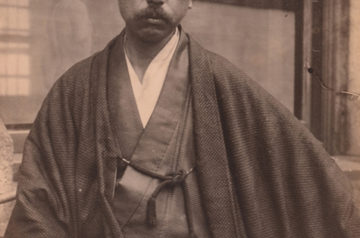Although bottled tea is much more popular, you’ll also find canned tea in Japan. The canning process of preserving food was invented in the 1800s in Europe. Since there...
History of Japanese Porcelain
Porcelain, a white, translucent, and non-porous material, was invented in China more than a thousand years ago. This ceramic is made with kaolin clay, and fired at a high...
Why Does the Kyusu Have a Side Handle?
Western and Chinese teapots usually have an upper or back handle. Have you wondered why the traditional Japanese teapot has a side handle? To answer this question, let’s take...
Kobori Enshu
Kobori Enshū (小堀遠州) was a feudal lord and a famous tea master from the beginning of the Edo period. He was regarded as the greatest tea master of his...
Okakura Kakuzo
If you’re into books about tea, you’ve probably at least heard of The Book of Tea, by Okakura Kakuzō (岡倉覚三), from 1906. Nowadays he is mainly known in the...
Furuta Oribe
Sen no Rikyū, the most famous master of the Japanese Tea Ceremony, taught his disciples to “do things differently”. Most of them either kept doing the same, or just...
Saichō
Saichō (最澄) was a monk from the Heian period who founded the Tendai school of Buddhism (天台宗) in Japan. He also brought tea from China to Japan with Kūkai,...
Sen no Rikyu: The Greatest Japanese Tea Master
Sen no Rikyū (千利休), also written as Sen Rikyū, is best known for perfecting the Japanese tea ceremony. Such was his importance, that he served as the tea master...
Takabayashi Kenzo: Pioneer of Tea Processing Machines
Most of the tea produced in Japan is processed by machine, because doing it by hand (temomi process) is very slow and costly. Takabayashi Kenzō (高林謙三) changed the Japanese...
Baisao: The First Senchado Master
For centuries, matcha accounted for most of the tea drank in Japan. This would change in the 18th century, in large part by the efforts of a traveling monk...
Tada Motokichi: The Father of Japanese Black Tea
People are often surprised to hear about Japanese black tea, or wakoucha (和紅茶), since Japan is mostly known for its green tea. Japanese black tea isn’t produced in large...
Takeno Joo
Takeno Jōō (武野 紹鴎) was the successor of Murata Jukō’s wabicha style of the Japanese tea ceremony. He was born in 1502 in what is now Nara prefecture. After...












